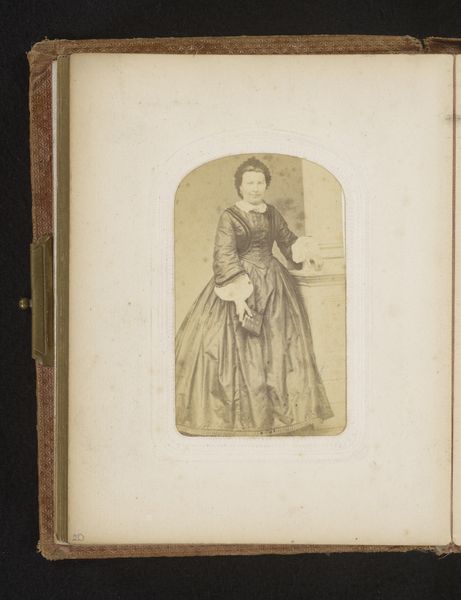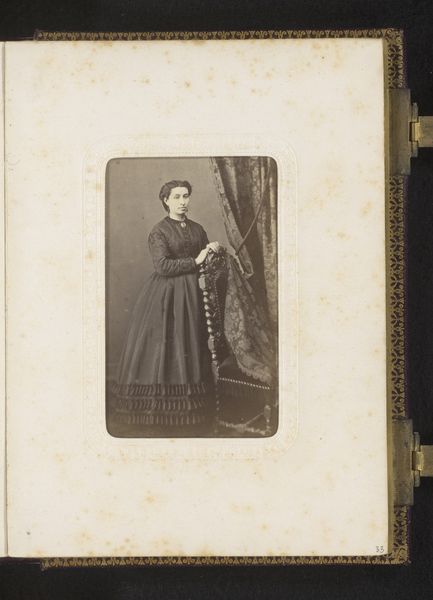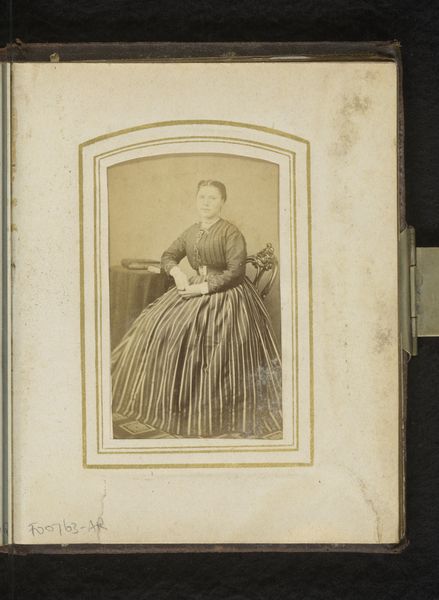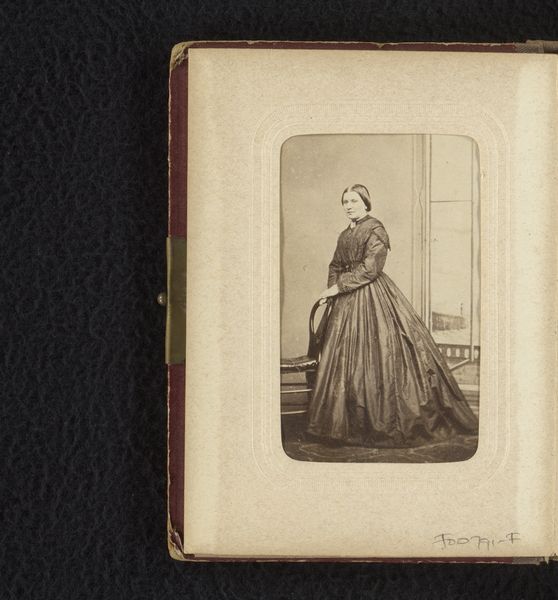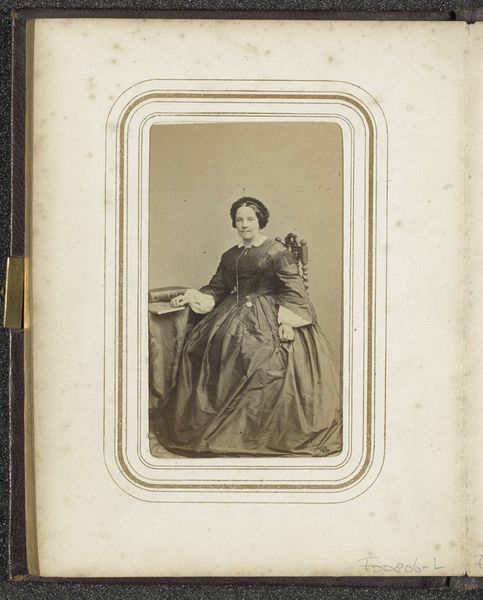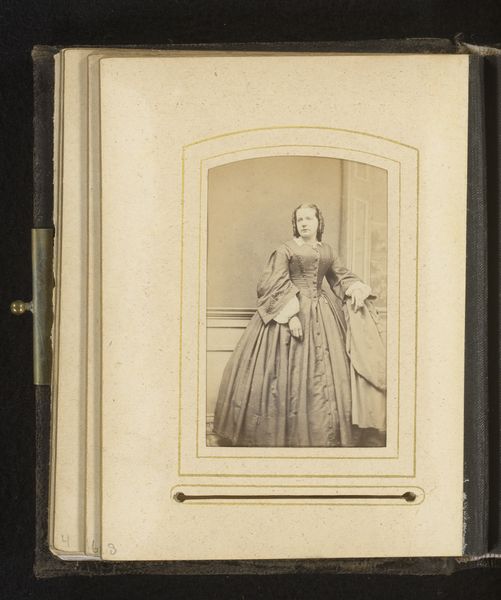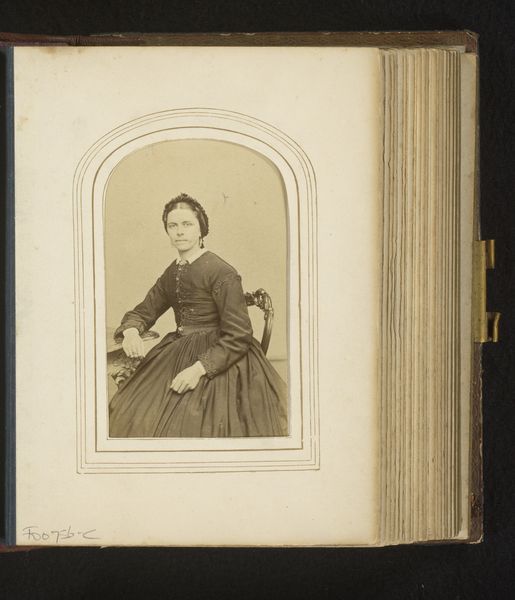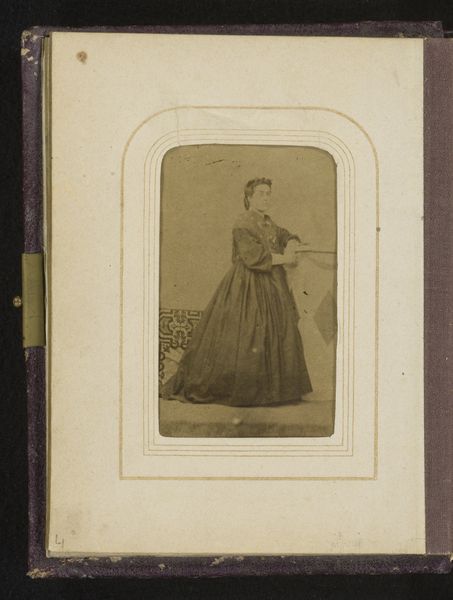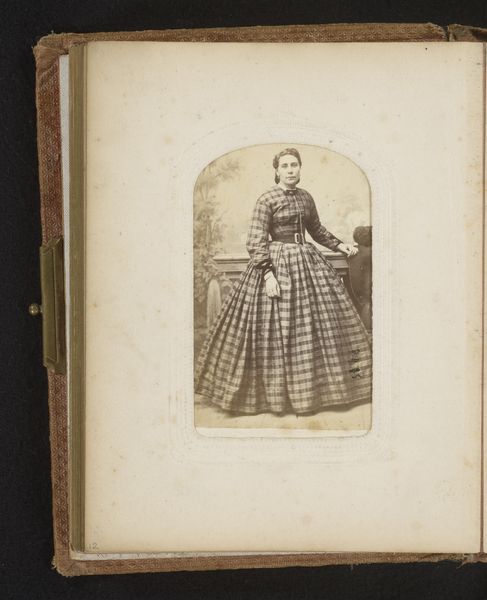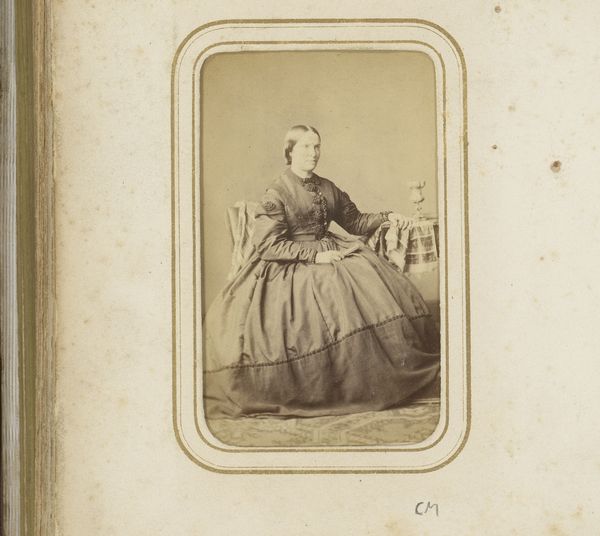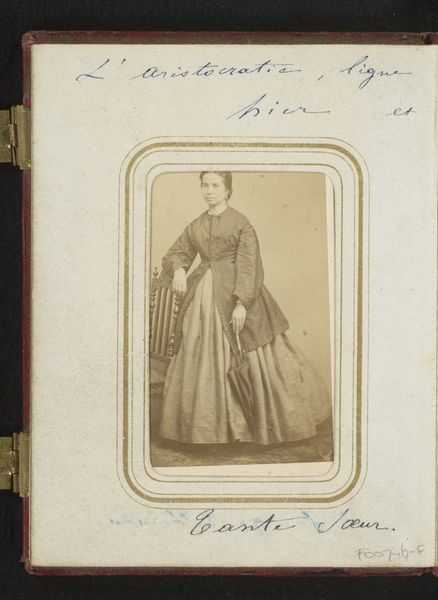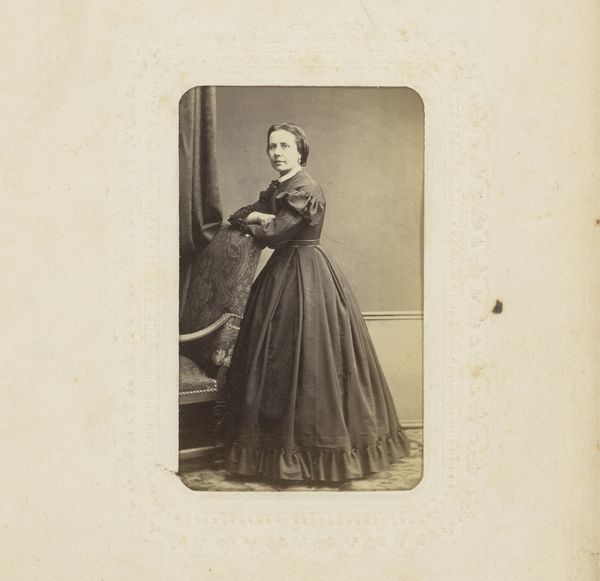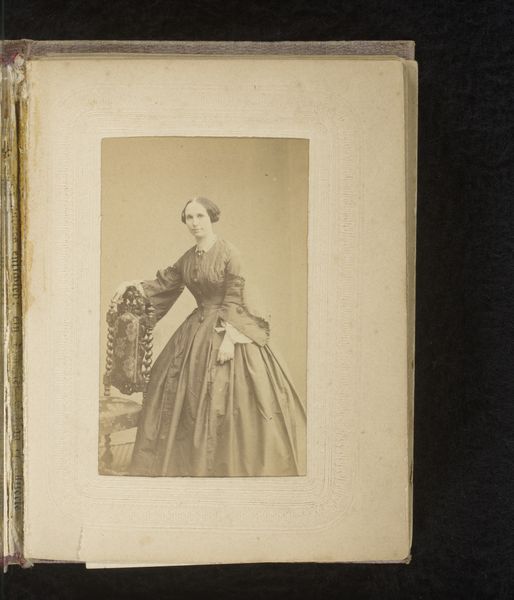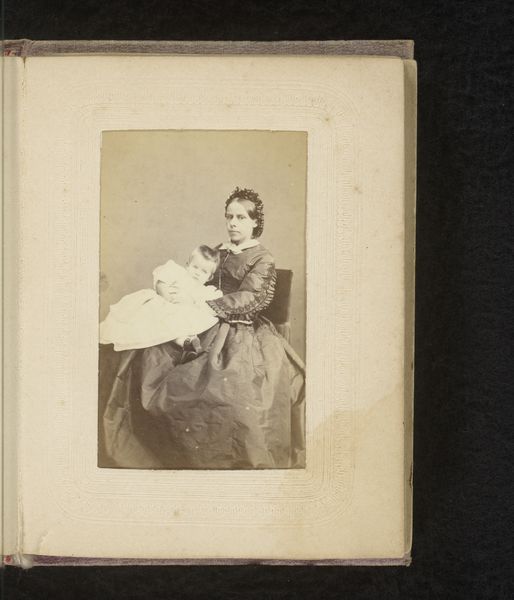
daguerreotype, photography
#
portrait
#
daguerreotype
#
photography
#
genre-painting
#
realism
Dimensions: height 84 mm, width 52 mm
Copyright: Rijks Museum: Open Domain
Curator: Let’s take a look at this image—"Portret van een zittende vrouw," or Portrait of a Seated Woman—made sometime between 1860 and 1900. The photographer is unknown but likely from the Atelier Rembrandt studio. The Rijksmuseum houses this fascinating daguerreotype, offering a glimpse into the lives of everyday people from that era. Editor: There’s a sort of solemn stillness to her, isn't there? It’s as if she's paused, suspended in a moment, while a whole bustling world keeps turning just out of frame. I wonder what her thoughts were, posing like that. The sepia tone gives the image a dreamy quality; it is more than just recording a moment; it creates an atmosphere. Curator: Exactly. Photography was becoming more accessible, allowing a wider range of social classes to commission portraits, although it still represented a significant investment for many. This image fits within a tradition of realistic portraiture, yet its democratic nature challenged the elitism of painted portraits, subtly reshaping the politics of representation. Editor: And isn’t that chair glorious? Seriously, I want it! I love the texture of the wood, but it is more than a prop; I mean, that ornateness speaks of aspirations beyond mere functionality. The woman’s pose looks both formal and surprisingly relaxed. Her dress, voluminous as it is, doesn't overpower her personality, but blends into a story. What do you reckon it reveals about societal roles? Curator: In this period, clothing often signified status, and dress was crucial in communicating respectability. However, unlike earlier aristocratic portraiture meant to showcase dynastic power, portraits such as this show how societal roles and respectability filtered down through other sections of the society. These pieces allowed ordinary citizens to participate in defining and visualizing these aspirational roles. Editor: Makes me want to step back into that era—not permanently, mind you! But just for a day to soak in that atmosphere, hear the whispers of conversations, and watch how she carries herself through her life. Photography as a window, you see. Curator: I concur; images such as this have far more to say to us today about the democratisation of imagery and how societies view themselves than at the time it was shot. Editor: Lovely to pause and wonder at how much can reside within a photograph!
Comments
No comments
Be the first to comment and join the conversation on the ultimate creative platform.
